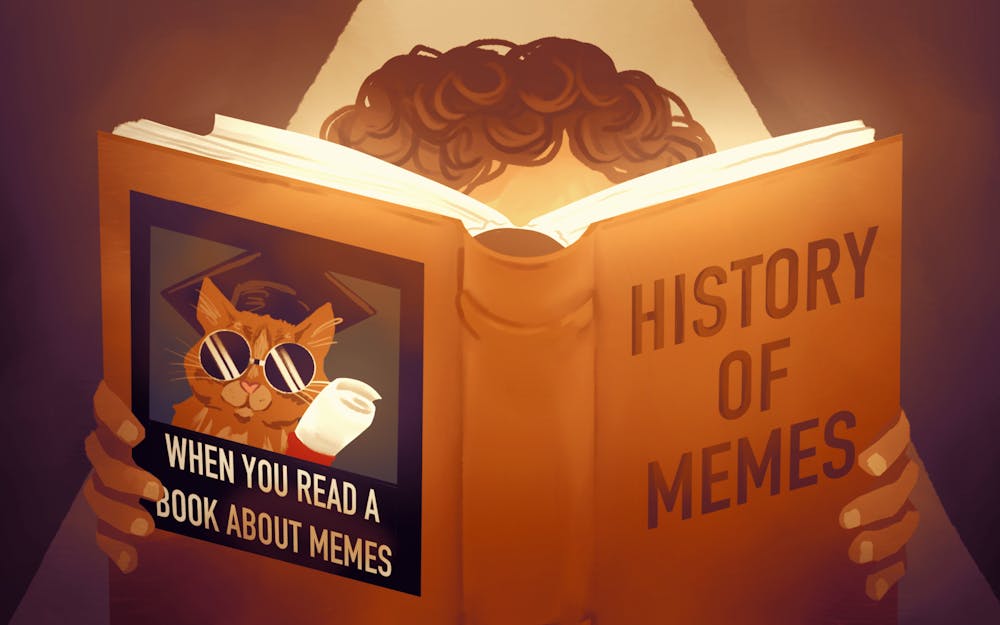If you’ve been on the internet in the past 20 years, chances are you’ve seen a meme somewhere. Maybe you’ve made your own, sent one to a group chat or maybe you even run a secret meme account on the side. Whatever your relationship to memes, you’re inevitably part of meme culture as a member of modern society.
At the most basic level, a meme is the representation of an idea in a visual, written or auditory form. This broad definition gives way for lots of things to be considered memes, but my primary focus is on specifically the development of internet memes in the past two decades. This time frame has not only experienced a rapid development of the internet itself, but it has simultaneously undergone an evolution of memes.
While I am by no means a meme specialist, the fact that memes have been around for my entire life makes me feel somewhat qualified to give a brief rundown of how I’ve watched them progress firsthand.
It all began with the emoticon.
Emoticons are easily the most basic form of memes, starting early in the internet’s development. All you need to make the simplest emoticons are symbols like the colon, semicolon, parathesis and other keys available on the standard keyboard. There’s no special software needed to make these emoticons and their meanings are straightforward. “:)” portrays happiness and “:(” portrays sadness.
The top text/bottom text style is where memes started getting more personalized and “viral memes” became more common. The top text/bottom text memes might look dated now, but their extended popularity in the mid 2000s speaks volumes about their grip on society at the time. No matter how far we stray from this style, it remains an iconic format. For instance, if one were to Google “meme,” they would primarily see this style. The top text/bottom text style continues to be used in a more ironic context.
When YouTube was launched in 2005, the world of memes was flipped upside down as videos became easily shareable. To me, this was undeniably the cringiest meme era when it first began. I think people were just so excited to make funny videos that a surplus of unfunny content was created as a result. The early video meme era includes phenomena like Rickrolling, which began in 2007.
The video memes have continued to evolve since then, with apps like Vine in 2012, Musical.ly in 2014 and TikTok in 2016. There are far too many subcategories of video memes to even begin to cover them, and it has only been 18 years since the rise of video sharing on YouTube.
Society is currently in the modern age of memes. There are some memes that have years of lore behind their meaning. It’s almost like you need to be in on the inside joke and up to date on their history to fully understand the meanings. I believe that this is the case because internet memes have been around just long enough to have their own history.
In addition to lore-rich memes, the use of irony is frequently seen in modern memes. A lot of the time these memes are created with the intention to bring old memes that are no longer funny back into circulation. This is considered ironic because the fact that they aren’t funny anymore is what makes them funny. Under this category are concepts like deep-fried memes or Meme Man.
Memes are like trends in the way that it’s nearly impossible to accurately predict their trajectory. Whatever era of internet memes is next, I just hope it makes us laugh.




